Are There Really Sharks in the Tropical Waters of Bali?
Yes, it’s true that there are sharks in Bali’s waters. This beautiful island is known for its crystal clear waters and rich marine life. Among the creatures living here are different species of shark. In this blog post, you’ll learn about these sharks. You’ll find out where they live and how they behave. This information will help you enjoy Bali’s waters safely. Let’s dive into the world of Bali’s sharks together.
Types of Sharks you can find in Bali Waters: Species and Identification
Shark species are commonly found in waters around Bali. Each one is unique. Let’s look at the most common ones that can be found in Bali’s waters.
The Blacktip Reef Shark
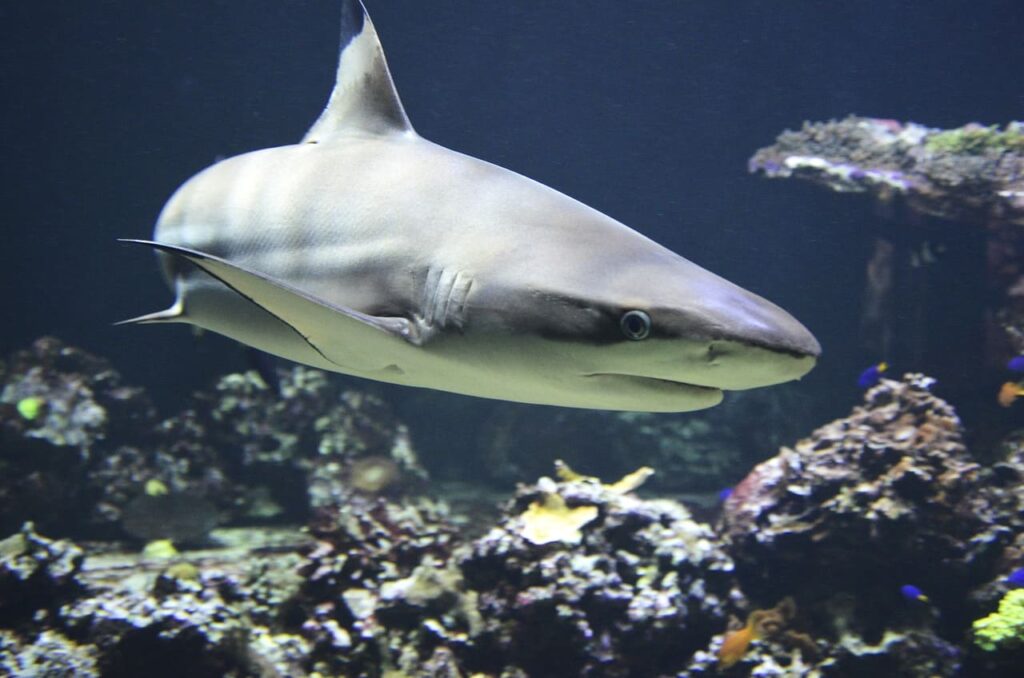
The Blacktip Reef Shark is one that is a common sight in Bali and the Indian Ocean. These sharks have black tips on their fins, which makes them easy to spot. They are not very big, usually around 5 feet long. These sharks are commonly found in shallow waters near coral reefs.
These sharks are shy around people. Reef sharks are usually not interested in humans, they don’t come close to swimmers or divers. They eat fish and small sea creatures. Because they are not aggressive, they are safe to observe from a distance. Remember, they are wild and can be unpredictable. It’s best not to try and interact with them.
Getting to Know the Grey and Whitetip Reef Sharks of Bali
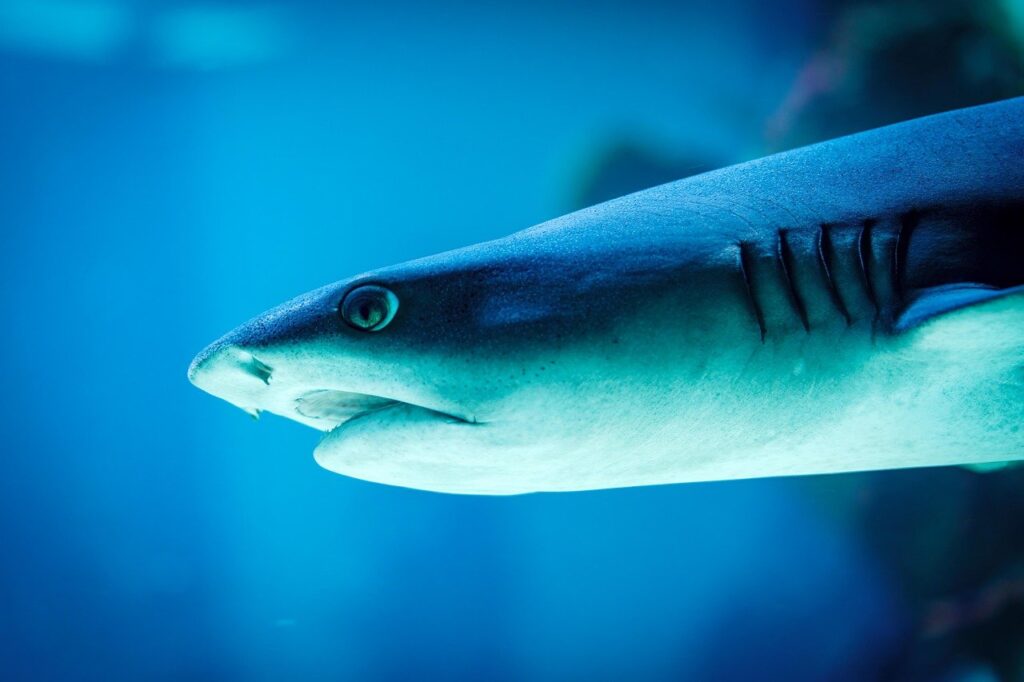
Grey Reef Sharks are medium-sized. They can grow up to 8 feet. You can recognize them by their grey bodies. They don’t have black tips on their fins. These sharks like coral reefs and warm ocean waters. They are usually calm but can be curious. They swim in groups during the day.
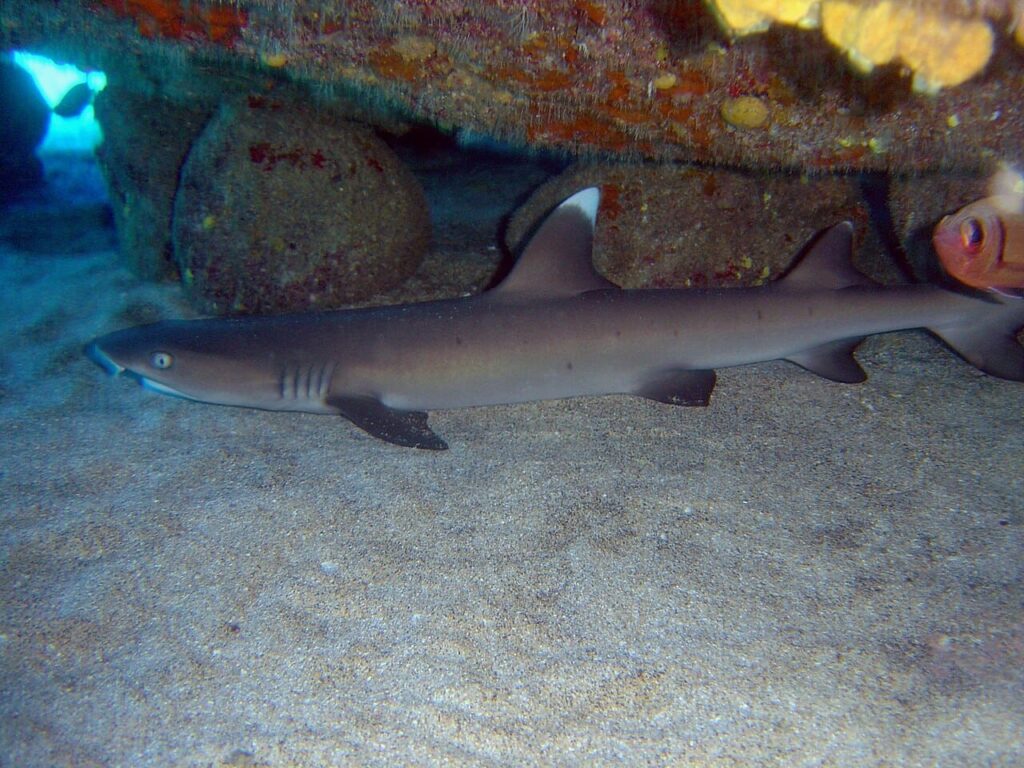
Whitetip Reef Sharks are about 5 feet long. They have white tips on their fins. These sharks are different because they rest in the day and are active at night. They stay near the bottom of the sea. Whitetip Reef Sharks are not aggressive. They are important for keeping fish numbers balanced.
Grey and Whitetip Reef Sharks play a crucial role in maintaining the health of Bali’s marine ecosystem in several ways:
- Predator-Prey Balance: These sharks help control the population of smaller fish and marine creatures. This balance is vital for a healthy ocean. If there are too many small fish, they might eat too much algae. Algae are important for coral health. Without enough algae, corals can die.
- Coral Reef Health: By feeding on weak or sick fish, these sharks keep fish populations strong. Healthy fish are better for coral reefs. Coral reefs are home to many sea creatures. They need to be healthy for the ocean to thrive.
- Ecosystem Diversity: Sharks add to the diversity of the marine ecosystem. A diverse ecosystem is a strong one. It can handle changes better, like changes in water temperature or pollution.
Information About The Grey Sharpnose and Indonesian Angel Sharks

Grey Sharpnose Sharks are small. They usually grow only about 2-3 feet long. They have a grey body and a pointed snout. These sharks live in shallow waters. They are not dangerous to people. They eat fishes and small sea creatures. You might see them near coral reefs.
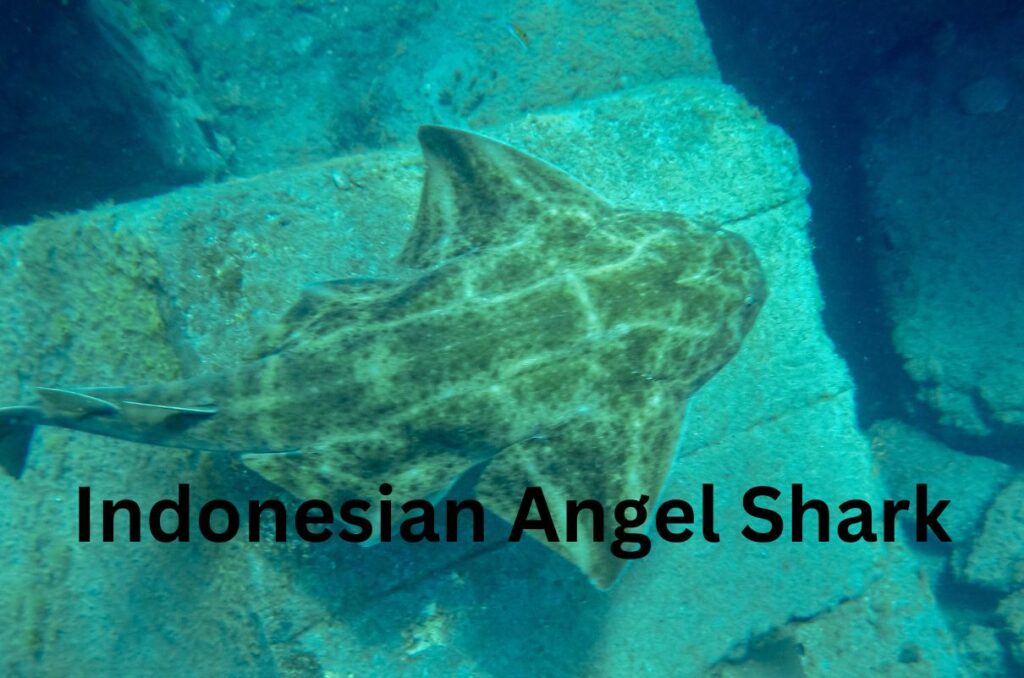
Indonesian Angel Sharks are very rare. They look different from other sharks. because of their flat bodies they look a bit like rays. They like deep waters and are hard to find. These sharks are not well-known because they live so deep in the sea. They are important but sadly, they are in danger because of overfishing.
The Exquisite Bamboo Shark of Bali Sea

Let’s talk about the Bamboo Shark, a unique fish in Bali’s sea. This shark is small and interesting. It has stripes like bamboo, which fade as it grows. These sharks are not big, staying around the coral reefs. They are gentle and swim near the bottom.
Bamboo Sharks are nocturnal, meaning they are active at night. During the day, they like to rest. They eat small fish and sea creatures. These sharks are not a threat to people. They show how diverse Bali’s sea life is.
Aggressive Sharks: The Tiger Shark and Bull Shark of Bali
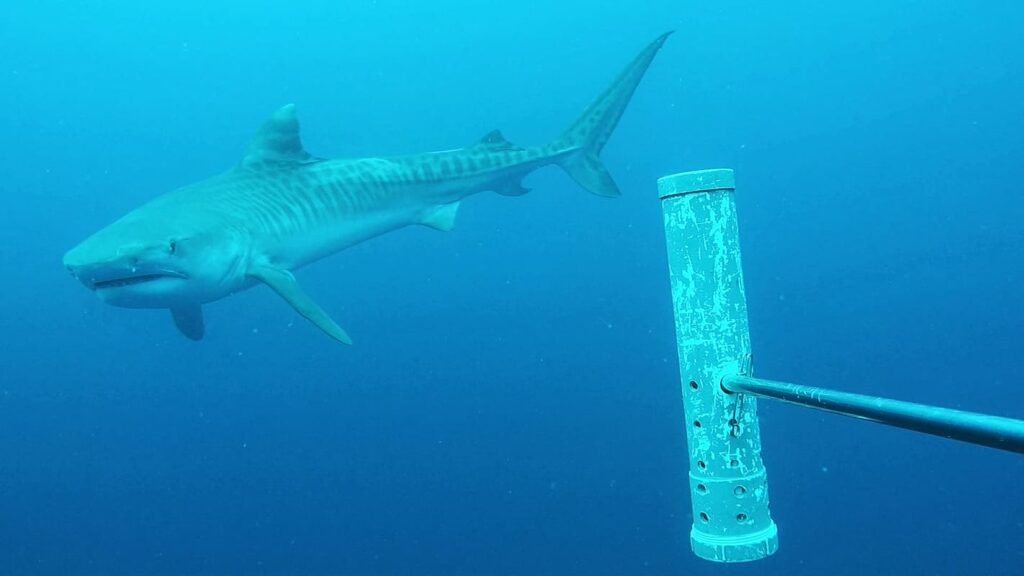
Tiger Sharks are big and strong. They can grow up to 5 meters and have stripes like a tiger when young, but these fade. They are known for being tough. Tiger Sharks eat many things and can be aggressive. These sharks can be found in deeper waters, away from the shore.
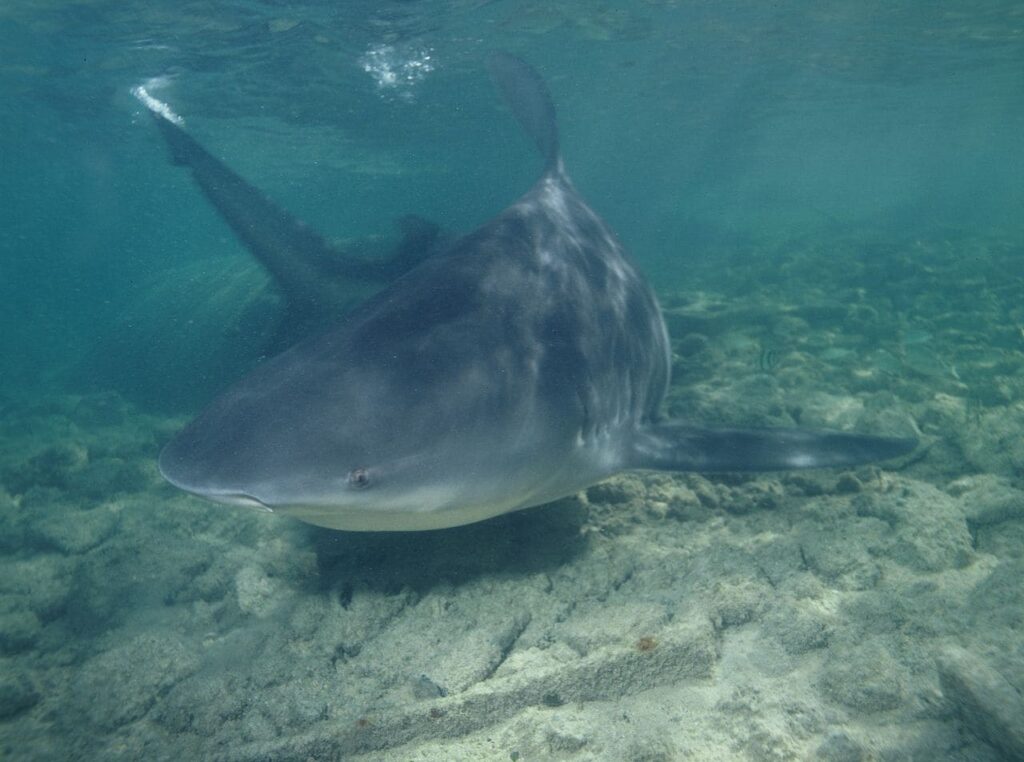
Bull Sharks are also known for their strength. They can live in both salt and fresh water. They grow up to 3.5 meters. Bull Sharks are often near the shore and can be aggressive. They are powerful and can adapt to different waters.
Both these sharks are in deeper parts of Bali’s sea. They are not often seen by swimmers or divers but are considered dangerous to humans.
Introduction to the Thresher and Hammerhead Shark
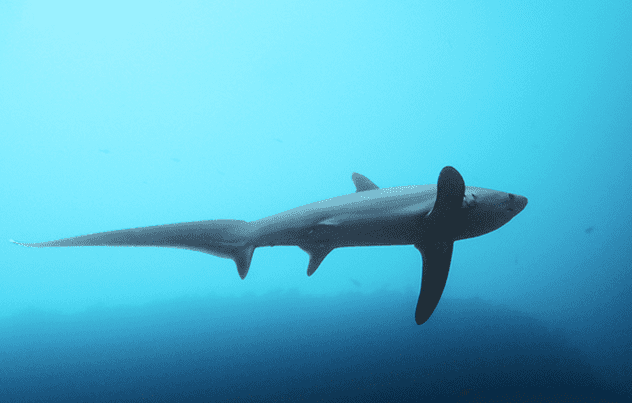
Thresher Sharks are known for their long tails. These tails are as long as their bodies. They use them to hunt fish. Thresher Sharks are big, growing up to 6 meters. They are shy and stay in deeper waters. They are not a threat to humans.
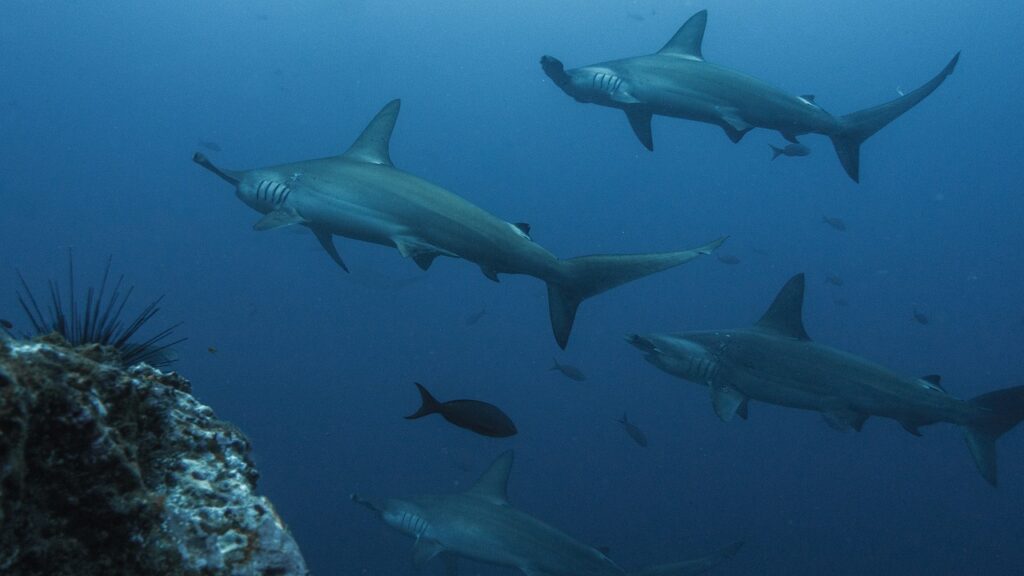
Hammerhead Sharks have a unique head shape. It looks like a hammer. This shape helps them find food in the sand. They can grow very big, up to 6 meters. It’s a large species of shark and are often in groups. They are not usually dangerous to people unless provoked.
Marine Life in Indonesia: The Bali Catshark
The Bali Catshark likes to stay near the bottom of the sea. It lives around reefs and rocky areas. This shark is not big, only about 50cm long. It’s not dangerous to people. It eats small sea creatures.
Do Great White Sharks Venture Into Bali Waters?
You might be curious if Great White Sharks swim in Bali’s waters. Great Whites are big and usually like cold seas. Bali’s warm tropical waters are not their usual spot.
There have been rare talks of Great White sightings near Bali. But, these are not typical. Great Whites sometimes travel far, so they might pass through. But, they don’t usually stay in Bali’s warm waters.
Seeing a Great White in Bali is very unusual. Most sharks here are smaller and gentler. Great Whites remind us of the ocean’s vastness.
Shark Attacks in Bali in Recent Years
Statistical Data on Shark Attacks in Bali
Let’s look at the facts about shark attacks in Bali. It’s important to know the risks. Shark attacks aren’t common here. According to Vacation Wildlife (Source), Bali sees about one unprovoked shark attack per year. These are usually not serious.
Most attacks involve surfers, not swimmers or divers. This is because surfers are further out in the sea. Remember, sharks don’t usually come close to the shore. In the big picture, shark attacks in Bali are not common. The sea here is mostly safe for enjoying.
Preventive Measures to Avoid Potential Shark Attacks
When swimming or diving in Bali, it’s smart to be careful. Here are some tips to stay safe from sharks. These come from the insights shared on Bali FUN Diving (Source).
- Swim in Designated Areas: Stick to places meant for swimming. These are usually safer and away from deep waters where sharks might be.
- Avoid Swimming at Dawn or Dusk: Sharks are more active during these times. It’s better to swim when the sun is up and bright.
- Don’t Swim Alone: Always have a buddy with you. It’s safer and more fun too.
- Stay Calm: If you see a shark, stay calm. Don’t make sudden movements. Slowly and smoothly move away.
- Avoid Bright Jewelry: Shiny objects can attract sharks. It’s better to leave jewelry off when you’re in the ocean.
- Be Aware of Your Surroundings: Keep an eye on what’s around you. If the water gets murky or you see fish acting strangely, it’s time to get out.
Remember, shark attacks in Bali are rare. But being cautious helps you stay safe and enjoy your time in the water.
Encounters with Sharks in Bali
Let me share some real stories of people meeting sharks in Bali. These tales add a personal touch to our understanding of sharks.
One story comes from Travel Snippet (Source). A surfer was enjoying the waves at a popular Bali beach. Suddenly, a shadow passed below. It was a Blacktip Reef Shark. The surfer stayed calm, and the shark swam away. It was a thrilling moment, but not dangerous.
Another story is from a diver, shared on American Oceans (Source). While exploring a coral reef, the diver saw a Whitetip Reef Shark. The shark was curious but peaceful. The diver admired it from a distance. It was an unforgettable experience seeing such a beautiful creature up close.
These stories show that sharks in Bali can be nearby. But they also remind us that these encounters are often safe.
Impacts of Tourism on Shark Population in Bali
Tourism in Bali affects sharks in different ways, both good and bad.
On the positive side, tourism brings attention to sharks. People come to see these amazing creatures. This can lead to more efforts to protect them. When tourists care about sharks, it helps conservation. This idea is shared by Bali FUN Diving (Source).
But, there are also negative impacts. Too many boats and people can disturb shark habitats. Sharks need peaceful places to live and find food. When their homes get too busy, it can be hard for them. American Oceans (Source) talks about this problem.
It’s important to find a balance. Responsible tourism can help protect sharks. This means following rules, not bothering sharks, and keeping the ocean clean.
Conservation Efforts to Protect Bali’s Sharks
In Bali, there are efforts to keep sharks safe. These efforts are important for their survival.
Local groups in Bali work hard to protect sharks. They make sure fishing is done right. This means not catching too many sharks. They also protect places where sharks live, like coral reefs. This helps keep the ocean healthy for sharks. Bali FUN Diving (Source) talks about these local actions.
International groups also help. They work with Bali to keep sharks safe. They share knowledge and resources. This global support is key for shark conservation. It brings more attention to the needs of Bali’s sharks. American Oceans (Source) highlights this international effort.
Everyone can play a part in protecting sharks. When you visit Bali, you can choose eco-friendly tours.
Hi I am Dwi. I am a blogger, travel agent and a mom of a lovely daughter and wife to a supportive husband. I customize and plan tours in Bali and islands nearby for a living and have been doing this for more than 14 years. Get in touch via contact [at] taletravels.com
